Fossil Dinosaur Specimen Bone-DP19-Jurassic/Morrison Formation

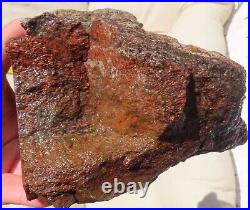
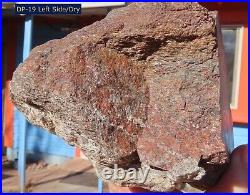
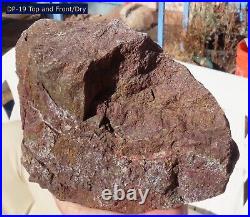

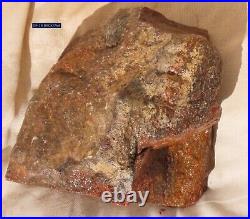
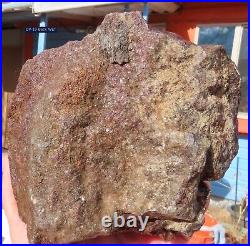
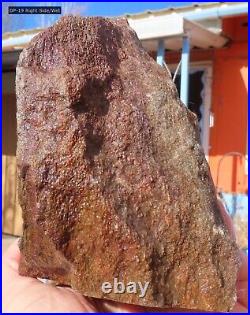

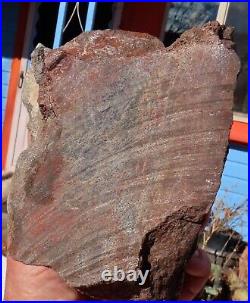
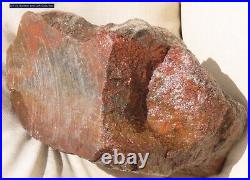

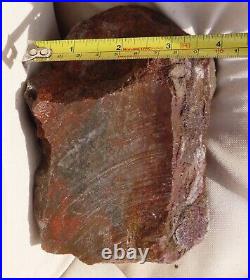
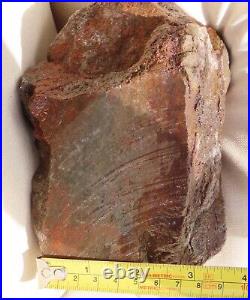
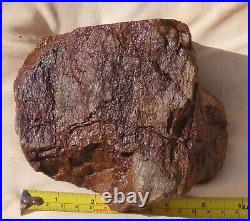
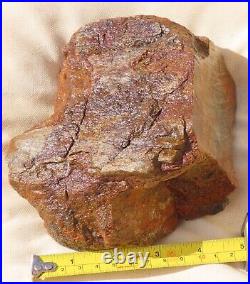
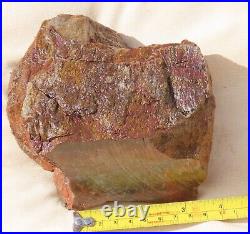
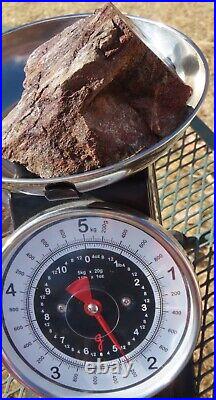

DP-19- Very Nice Specimen Piece with detailed colorful rind on one side, and one cut face. I always like to put up an extra special piece for those whom may be feeling gloomy to not make it to Quartzite, or attend the Tucson Gem and Mineral Show. For those who wonder, the DP designation refers to a large piece, whereas when I list as DS, it is a single piece that isn't hefty. This is a section of what must have been a very big bone since the other surfaces appear mainly marrow with some skin on the left and right sides.
Shown both Wet & Dry. Weight: 2,200 Grams/ 4.86 Pounds. For points of reference, and by no means a suggestion for display, I will refer to the cut face as the Bottom, and the colorful rind surface as the Front. Front: Iron-rust colored rind with white, tan and light blue patches of skin. 4 1/2 inches at bottom; Five inches for most of this side; About two inches wide where the chunk breaks out for the top. Left side 4.75 inches tall; Middle- 3 1/2 inches Tall; Right Side 3 1/2 inches Tall. Left Side/Edge: This edge is very colorful with bright red, tan, orange, white and a rust color too. It has an irregular depth that reveals some potential for a gem slab. 3 1/2 inches WIDE/Bottom; 3 3/4 though middle; tapering to about 2 1/2 inches at the top. Right Side/Edge: Some skin of tan and rust/red agate, but looks like some marrow too. In the sunlight/dry it sparkles with fine crystals sprinkled throughout - but this definitely isn't its most colorful or interesting side. 2 3/4 wide to 3 inches Wide at bottom X 3 1/4 inches to 4 1/4 Tall. Back: An array of subtle colors and not much texture; some raised skin. 4 1/4 Wide at bottom/cut face; mainly 6 1/2 inches wide for the rest. 4 1/4 (right side) to 5 inches tallest point and Four inches Tall Left Side. Top: Iron-rust color and some light tan, not much texture. Shows some fine marrow cells, but not much color. 5 1/2 inches Wide X 1 1/4 thick (right side) to Two inches Thick through middle to Left Side. Bottom: Has a smooth cut face that for this initial cut, didn't reveal as much color as hoped.That doesn't mean it won't show more with another cut; it has patches of bright red with black webbing, but compressed cells too with smokey & clear crystal cells in center. 3 to 3 1/2 inches Wide X Three inches Tall. Dinosaurs first appeared at the end of the Middle Triassic or in early Late Triassic time, approximately 230 million years ago. The primitive dinosaurs of the Triassic were neither as abundant nor as varied as they would become in Jurassic and Cretaceous times.
The fluvial (stream-deposited) sediments of the Morrison Formation dominated the Upper Jurassic landscape of eastern Utah. Originating approximately 150 million years ago as floodplain deposits, the Morrison Formation is exposed throughout the Colorado Plateau, including Colorado, Wyoming, eastern Utah, northern New Mexico, parts of Montana and South Dakota, and the panhandle of Oklahoma.
